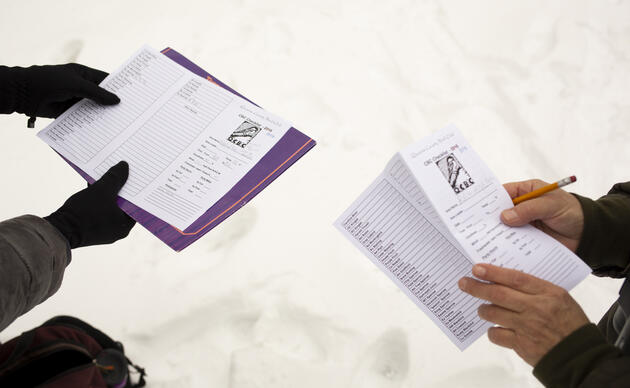Community Science
What is Community Science?
Community science is a type of research that provides people from all backgrounds with a fun opportunity to contribute meaningful data to deepen our understanding of important scientific issues such as bird conservation. With the help of community members, researchers are able to increase the amount of data they can collect and gather information from more geographic regions. This helps to reveal how birds are affected by habitat loss, pollution, disease, climate, and other environmental changes. As a result, these data can inform conservation plans that help to protect birds and habitats they rely on. Continue reading to find a program that is right for you!
How to get started
- Identify a community science project that interests you.
- Visit the project’s web page to gather information including: instructions for participants, materials required to participate, data collection and entry, mobile app set-up, and assistance on getting started.
- To participate in a bird-related community science effort, tools such as binoculars, a bird guide, the Audubon mobile app, and access to a smart phone or computer may be helpful.
- Familiarize yourself with the area you will be counting birds. This may vary depending on the project, but most projects can take place at your house, in your neighborhood, or in public parks or natural areas in your community.
- Recruit your friends and family!
- Remember to follow instructions and enter your data- it is only useful if project coordinators are able to access it!
Find the Right Community Science Project for You!
eBird- eBird is a global database of bird observations, and is an amazing tool for birders of all skillsets to keep track of their bird sightings, photos, and audio recordings. eBird also allows you to see real time maps of where species have been observed, and find birding hotspots wherever you go!
Most importantly, eBird is among the world’s largest community science projects, with more than 100 million bird sightings contributed annually by eBirders around the world. Participants enter when and where they went birding, and then fill out a checklist of all the birds seen and heard during the outing in the eBird app. This data helps scientists to understand the distribution, abundance, habitat use, and trends of birds. Free to participate.
Climate Watch- Audubon’s Climate Watch is a community science program that explores how North American birds are responding to climate change. This program takes place from January 15 - February 15 and May 15 - June 15, and enlists volunteer birders across North America to count target bird species in the same place (or places) each year. Climate Watch participants do not need to be expert birders, but should know how identify target species by sight and sound or be interested in learning to do so. Free to participate.
Great Backyard Bird Count- Launched in 1998 by the Cornell Lab of Ornithology and National Audubon Society, the Great Backyard Bird Count (GBBC) is a program that helps researchers understand global bird populations before one of their annual migrations. This program takes place from February 18-21, and requires that participants watch and count birds for 15 minutes or more, at least once over the four days. Then, participants enter their data into the database using the free Merlin Bird ID app or eBird. Free to participate.
NestWatch- NestWatch is a nationwide nest-monitoring program designed to track status and trends in the reproductive biology of birds, including when nesting occurs, number of eggs laid, how many eggs hatch, and how many hatchlings survive. Participating in NestWatch is easy as completing online training to get certified, monitoring bird nests, recording data, and submitting your data online. Free to participate.
Learn more about community science in Nebraska with the Community Scientists of Nebraska Network (CSNN): https://communitysciencene.unl.edu/
If you have questions about participating in community science, call 308-468-5282.

